Nelson
Hospital
Kingston Road, Merton, SW20 8DB
Medical
dates:
Medical
character:
Acute. Later, psychogeriatric
The first hospital in Wimbledon
had opened in May 1900 in Thurston Road in the north part of the
district, although nine-tenths of the patients lived south of the
railway. In 1899 a meeting was held, at which Mr T.C. Summerlee of the
Surrey County Council presided, with a view to founding a hospital for
south Wimbledon, an idea which had originated from Mr Frank Deas
(1869-1946), a local surgeon. A resolution was passed
unanimously that "in the opinion of the meeting separate cottage
hospital accommodation is greatly needed for Wimbledon and Merton south
of the railway". A Committee of eight persons was appointed,
including Mr Deas, the only medically qualified participant.
Initially there was difficulty in finding suitable premises, as house owners fought shy of letting or selling their premises for use as a hospital. Eventually an early Victorian villa was acquired and converted.
The South Wimbledon, Merton and District Cottage Hospital was officially opened in May 1900 by Emily Bonsor, wife of Cosmo Bonsor, the then MP for Wimbledon. The villa, at 173 Merton Road near Pelham Road, had three storeys and a basement; a stable with a loft were beside it. The basement became the kitchen and Nurses' Dining Room. The wards, containing 6 beds and 2 cots, were located on the ground and first floors, while the top floor served as the nurses' living quarters. A small conservatory at the back became Matron's office. The stable was used as a storeroom and the loft above it as a mortuary.
The Hospital soon grew to 12 beds but, with the arrival of the railway the population in the area had greatly increased, and the Hospital facilities were still found inadequate. In 1905, the centenary of Admiral Nelson's final victory at Trafalgar, a Trafalgar Centenary Collection was organised, which became the nucleus of the fund for building a new hospital. It was decided that a worthy memorial to Nelson in his "dear, dear Merton" would be to name the new building the Nelson Hospital.
By1909 concern had arisen that no site for the new hospital had been located, but eventually land adjacent to The Rush on Kingston Road in Merton Park was found and this, together with a row of derelict cottages on the east side, were bought in 1911. The foundation stone was laid by the Duchess of Sutherland, using a special presentation trowel and a mallet. The Duchess was then presented with the trowel and the mallet in a casket, the latter two items made from oak taken from HMS Victory.
The bed capacity soon proved to be inadequate and seven more were added.
During WW1, from 1914 to 1915, the Hospital became an auxiliary hospital to the Royal Herbert Hospital, providing 15 beds for injured and sick servicemen. On 25th September 1915 the military beds were affiliated with the Horton (County of London) War Hospital in Epsom until they closed on 29th June 1916.
In 1918 the Hospital was asked by the newly formed Ministry of Pensions to install an X-ray Department, as well as to provide massage and electrical treatments for ex-servicemen in the area needing continuing care. The education authorities also began to refer orthopaedic cases to the Hospital, and thus an Orthopaedic Department was established.
A new wing was added to the east side in 1922 by the Merton Urban District Council to commemorate Merton soldiers lost in WW1. It was opened by Admiral of the Fleet Sir Frederick Charles Doveton Sturdee. The wing contained a children's ward on the ground floor, a new female ward on the first floor, with nurses' quarters above, new domestic offices, residences for the Medical Officers, a new X-ray Department and Pathology Laboratory. A temporary annexe was attached to the male ward.
In 1924 it was decided a Maternity Department was needed. A dozen cottages on an adjacent site were purchased, with the Hospital paying compensation to the occupants for turning them out (including a brewery company who had to be provided with a new off-licence in lieu of the one sandwiched between the last two old cottages).
The Princess Royal laid the foundation stone in 1930 and the new wing was opened by Mrs Stanley Baldwin, wife of the former Prime Minister, the following year. It had 21 beds and included rooms for antenatal clinics, two labour wards, a nursery for the babies and an isolation ward. At the same time an upper floor extension was built onto the original central block. The Hospital then had 86 beds. An Infant Welfare Department was also established.
In 1932 an Out-Patients and Casualty Department opened.
The outbreak of WW2 meant that no lavish fund-raising schemes were possible. In 1944 Blakesley House, an adjacent property which had been bequeathed to the Hospital by a patient in 1943, was converted to accommodate night nurses and a Physiotherapy Department.
After the war, building work commenced in 1947 on an extension to the Maternity Wing to provide 21 additional beds and two new labour wards. A temporary Nurses' Home for 32 nurses, to house the nurses displaced by the Maternity Wing scheme (also to provide extra accommodation needed for the extra staff to look after the additional beds), was built on the site of Blakesley House.
The Nurses' Home was completed in August 1948, after the Hospital had joined the NHS under the control of the St Helier Group Hospital Management Committee, part of the South West Metropolitan Regional Hospital Board. At this time the Hospital had 116 beds; new clinics for gynaecology and ENT disorders had been established.
In 1953 the Maternity Wing had 47 beds. It was decided that more accommodation was needed for adult female patients, while the children's ward with 18 beds was rather too big. A large empty room on the first floor was converted into a 12-bedded children's ward and the old children's ward became a women's ward. The weekly cost of an in-patient at this time was £13 9s 3d (£13.46).
In 1958, when the Hospital had 121 beds, the weekly cost of an in-patient was £23 9s 9d (£23.49) and, in 1959, £25 11s 7d (£25.58). A lift was installed in the Maternity Wing, which had wards on two floors, with the operating theatre on the ground floor.
Over the years extensions and modifications were made to the buildings at the rear of the site. The X-ray Department was enlarged in 1960.
In 1966 the Hospital had 128 beds, of which 111 were staffed. The weekly cost of an in-patient was £71 15s 2d (£71.76), compared to £54 13s 1d (£54.65) in 1965.
In 1970 a new Ante-Natal Department opened.
By 1970 the weekly cost of an in-patient had risen to £87.05 and, by the following year, to £104.72.
During 1980 and 1981 the Maternity Wing was converted into a 60-bedded surgical unit with a new operating theatre, while in the centre of the Hospital, on the ground floor, one small and two large wards - Falkland, Trafalgar and Copenhagen - became a 48-bedded geriatric unit and day hospital for the elderly (that enabled the Wimbledon Hospital to be closed).
In 1995 planning permission was granted for redevelopment of the Hospital. This, however, was not implemented and the planning permission has now expired.
Initially there was difficulty in finding suitable premises, as house owners fought shy of letting or selling their premises for use as a hospital. Eventually an early Victorian villa was acquired and converted.
The South Wimbledon, Merton and District Cottage Hospital was officially opened in May 1900 by Emily Bonsor, wife of Cosmo Bonsor, the then MP for Wimbledon. The villa, at 173 Merton Road near Pelham Road, had three storeys and a basement; a stable with a loft were beside it. The basement became the kitchen and Nurses' Dining Room. The wards, containing 6 beds and 2 cots, were located on the ground and first floors, while the top floor served as the nurses' living quarters. A small conservatory at the back became Matron's office. The stable was used as a storeroom and the loft above it as a mortuary.
The Hospital soon grew to 12 beds but, with the arrival of the railway the population in the area had greatly increased, and the Hospital facilities were still found inadequate. In 1905, the centenary of Admiral Nelson's final victory at Trafalgar, a Trafalgar Centenary Collection was organised, which became the nucleus of the fund for building a new hospital. It was decided that a worthy memorial to Nelson in his "dear, dear Merton" would be to name the new building the Nelson Hospital.
By1909 concern had arisen that no site for the new hospital had been located, but eventually land adjacent to The Rush on Kingston Road in Merton Park was found and this, together with a row of derelict cottages on the east side, were bought in 1911. The foundation stone was laid by the Duchess of Sutherland, using a special presentation trowel and a mallet. The Duchess was then presented with the trowel and the mallet in a casket, the latter two items made from oak taken from HMS Victory.
The bed capacity soon proved to be inadequate and seven more were added.
During WW1, from 1914 to 1915, the Hospital became an auxiliary hospital to the Royal Herbert Hospital, providing 15 beds for injured and sick servicemen. On 25th September 1915 the military beds were affiliated with the Horton (County of London) War Hospital in Epsom until they closed on 29th June 1916.
In 1918 the Hospital was asked by the newly formed Ministry of Pensions to install an X-ray Department, as well as to provide massage and electrical treatments for ex-servicemen in the area needing continuing care. The education authorities also began to refer orthopaedic cases to the Hospital, and thus an Orthopaedic Department was established.
A new wing was added to the east side in 1922 by the Merton Urban District Council to commemorate Merton soldiers lost in WW1. It was opened by Admiral of the Fleet Sir Frederick Charles Doveton Sturdee. The wing contained a children's ward on the ground floor, a new female ward on the first floor, with nurses' quarters above, new domestic offices, residences for the Medical Officers, a new X-ray Department and Pathology Laboratory. A temporary annexe was attached to the male ward.
In 1924 it was decided a Maternity Department was needed. A dozen cottages on an adjacent site were purchased, with the Hospital paying compensation to the occupants for turning them out (including a brewery company who had to be provided with a new off-licence in lieu of the one sandwiched between the last two old cottages).
The Princess Royal laid the foundation stone in 1930 and the new wing was opened by Mrs Stanley Baldwin, wife of the former Prime Minister, the following year. It had 21 beds and included rooms for antenatal clinics, two labour wards, a nursery for the babies and an isolation ward. At the same time an upper floor extension was built onto the original central block. The Hospital then had 86 beds. An Infant Welfare Department was also established.
In 1932 an Out-Patients and Casualty Department opened.
The outbreak of WW2 meant that no lavish fund-raising schemes were possible. In 1944 Blakesley House, an adjacent property which had been bequeathed to the Hospital by a patient in 1943, was converted to accommodate night nurses and a Physiotherapy Department.
After the war, building work commenced in 1947 on an extension to the Maternity Wing to provide 21 additional beds and two new labour wards. A temporary Nurses' Home for 32 nurses, to house the nurses displaced by the Maternity Wing scheme (also to provide extra accommodation needed for the extra staff to look after the additional beds), was built on the site of Blakesley House.
The Nurses' Home was completed in August 1948, after the Hospital had joined the NHS under the control of the St Helier Group Hospital Management Committee, part of the South West Metropolitan Regional Hospital Board. At this time the Hospital had 116 beds; new clinics for gynaecology and ENT disorders had been established.
In 1953 the Maternity Wing had 47 beds. It was decided that more accommodation was needed for adult female patients, while the children's ward with 18 beds was rather too big. A large empty room on the first floor was converted into a 12-bedded children's ward and the old children's ward became a women's ward. The weekly cost of an in-patient at this time was £13 9s 3d (£13.46).
In 1958, when the Hospital had 121 beds, the weekly cost of an in-patient was £23 9s 9d (£23.49) and, in 1959, £25 11s 7d (£25.58). A lift was installed in the Maternity Wing, which had wards on two floors, with the operating theatre on the ground floor.
Over the years extensions and modifications were made to the buildings at the rear of the site. The X-ray Department was enlarged in 1960.
In 1966 the Hospital had 128 beds, of which 111 were staffed. The weekly cost of an in-patient was £71 15s 2d (£71.76), compared to £54 13s 1d (£54.65) in 1965.
In 1970 a new Ante-Natal Department opened.
By 1970 the weekly cost of an in-patient had risen to £87.05 and, by the following year, to £104.72.
During 1980 and 1981 the Maternity Wing was converted into a 60-bedded surgical unit with a new operating theatre, while in the centre of the Hospital, on the ground floor, one small and two large wards - Falkland, Trafalgar and Copenhagen - became a 48-bedded geriatric unit and day hospital for the elderly (that enabled the Wimbledon Hospital to be closed).
In 1995 planning permission was granted for redevelopment of the Hospital. This, however, was not implemented and the planning permission has now expired.
Present status (February
2008)
Active debate among the local community continues as to redevelopment of the Hospital as a community hospital. The four original pavilion blocks and the wall in front of them, and perhaps the Lodge adjacent to Blakesley Walk, are to be retained and incorporated into the new building. The remainder of the buildings will be demolished.
Active debate among the local community continues as to redevelopment of the Hospital as a community hospital. The four original pavilion blocks and the wall in front of them, and perhaps the Lodge adjacent to Blakesley Walk, are to be retained and incorporated into the new building. The remainder of the buildings will be demolished.
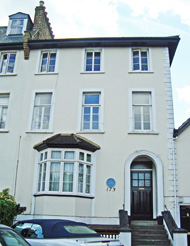
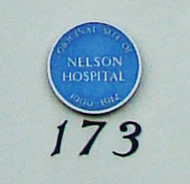
The original site of the Nelson Hospital, then known as the South Wimbledon, Merton and District Cottage Hospital, at 173 Merton Road.
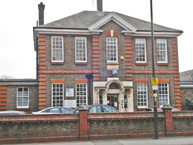
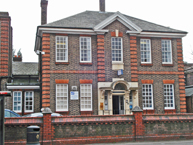
The main entrance building of the Hospital (left). The Out-Patients Department is identical to the main entrance building (right).
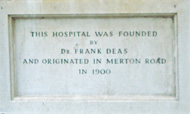
The 1911 foundation stone laid in Kingston Road.
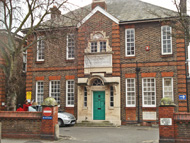
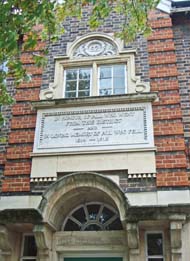
The Memorial Wing on Kingston Road - its facade differs slightly (left). The War Memorial tablet above the entrance door (right).
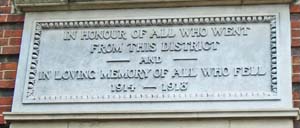
The War Memorial masonry plaque dedicated to the men lost fighting the the Great War.
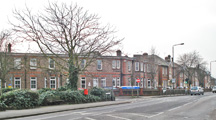
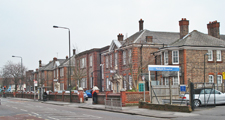
The Kingston Road frontage is made up of several two-storey pavilions (left). The Kingston Road frontage from the west (right).
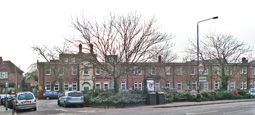
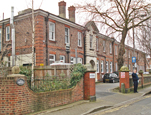
A distant view from the east of The Rush frontage (left). The Rush frontage from Watery Lane (right).
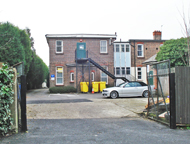
The ambulance bay in Watery Lane.
(Author unstated) 1899 Proposed cottage hospital for south Wimbledon. British Medical Journal 1 (2005), 1380.
(Author unstated) 1912 (Untitled). British Journal of Nursing, 4th May, 354.
Deas F 1981 Origin, Growth and Development of the Nelson Hospital, Merton. London, Merton Library Services.
Lord JR 1920 The Story of the Horton (County of London) War Hospital, Epsom - Its Inception and Work and Some Reflections. London, Heinemann.
Smith J 1984 Hospital building in the NHS. Ideas and design II: harness and nucleus. British Medical Journal (Clin Res Ed) 289, 1513.
www.facebook.com
www.merton.gov.uk
www.wimbledonmuseum.org.uk
Return to home page